Efficiency and sustainability are significant in the ever-changing mining landscape. High-density polyethylene (HDPE) pipes are game-changers, especially during tailing management stages. This article focuses on the transformative role of HDPE piping systems by highlighting their distinct features, which include durability, corrosion resistance, and lightweight nature. We aim to provide a holistic comprehension of how HDPE pipes are changing mining operations by investigating their use in transporting tailings and encouraging eco-friendly policies to save the environment for better performance, reducing environmental impacts.
Why Choose HDPE Pipe for Mining Applications?
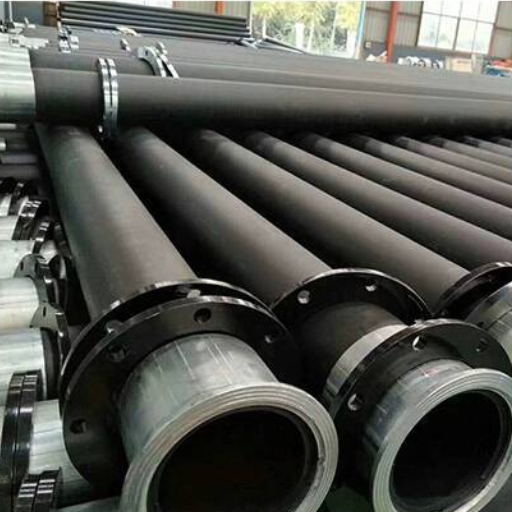
Image source: https://www.phhdpepipe.com/
There are several key advantages offered by HDPE pipes that make them well-suited for use in mining operations. For one thing, they have exceptional corrosive resistance, thus ensuring their long-term service life even under exposure to strong chemicals in mine waste. In addition, these pipes are lightweight, facilitating ease of handling during installation, thereby minimizing labor costs while boosting on-site productivity. Moreover, HDPE pipe flexibility allows it to survive ground movements and shifting loads, hence minimizing damages caused on them. Finally, HDPE has smooth interior surfaces, reducing friction and leading to enhanced flow rates and energy savings levels; lastly, it can be recycled, making it an environmentally friendly choice for responsible mining practices.
Advantages of HDPE Pipe in Mining
- Corrosion Resistance: HDPE pipes are made of high-density polyethylene, making them resistant to many chemical agents and environmental factors important in mining industries. This aids in minimizing maintenance costs and extends the lifetime of piping systems.
- Lightweight and Easy to Handle: HDPE’s lightweight means it can be easily transported and installed, thus reducing labor requirements and cutting down on time. This is especially handy when dealing with remote mining areas where heavy machinery is unavailable.
- Flexibility and Durability: HDPE pipes are significantly flexible, so they can adjust to ground movements, which is common at mining sites characterized by shifting loads. Such agility minimizes chances of breakages and downtime, hence ensuring continuous running.
- Improved Flow Rates: To increase flow rates, transportation energy required for tailings movement is minimized through the smooth interior of HDPE pipes to decrease friction loss. In the long run, this brings about efficiency in terms of productivity and a reduction in operation costs.
-
Sustainability: Being a fully recyclable material, HDPE supports sustainable mining practices by reducing waste generation and promoting environmental stewardship. Therefore, there is an alignment with increased regulatory demands for sustainability within the sector, enhancing responsible management of resources.
Comparing Polyethylene Pipe to Steel Pipe
Several key differences between polyethylene (HDPE) pipes and steel pipes can influence the choice of mining operations.
- Corrosion Resistance: HDPE pipes inherently resist corrosion, making them ideal for environments with frequent exposure to chemicals. However, steel pipes corrode over time, especially when exposed to harsh conditions, leading to potential leaks and increased maintenance costs.
- Weight and Handling: HDPE’s lightweight properties allow for easier handling, transport, and installation than steel piping systems with greater weight and often require additional machinery for handling and placement. This will significantly reduce labor costs and equipment requirements in remote mining locations.
- Flexibility and Impact Resistance: HDPE pipes, on the other hand, are flexible enough to withstand movement of the ground without cracking, while steel pipes are rigid; hence, there may be a chance of failing if subjected to extreme pressure changes or movement of the earth’s surface. The flexibility also enables its use in uneven sites typical of mining areas.
- Flow Efficiency: The smooth interior of these tubes helps reduce friction losses, resulting in enhanced flow rates, unlike metallic ones, which may have rough surfaces inside them and collect scale with time, eventually reducing efficiency.
- Longevity and Maintenance: Compared to steels, these have a longer service life with lesser upkeep demands, which might necessitate regular inspections and coating against corrosion tendencies similar to those of similar products.
While both materials have their benefits, HDPE conduits offer exceptional advantages in terms of sustainability, corrosion resistance, and operational effectiveness, making them preferable for contemporary mining practices.
Cost-Effectiveness and Maintenance of PE Pipe
Given the economics of polyethylene (PE) tubes, their cheap initial costs and minimal upkeep demands make them cost-effective for many uses. PE pipes can yield significant savings over time due to their long life spans and corrosion immunity, reducing the need for frequent replacements and repairs. In addition, the ease of installation is enhanced by the light weight of PE pipes, which reduces labor costs and machinery expenses, especially in remote areas where heavy machinery may be challenging to transport.
It is also relatively easy to maintain PE pipes. For instance, in terms of chemical attack resistance and scaling or biofouling tendencies, it may be seen that there is often less requirement when compared to traditional materials such as steel. This combination of low initial outlay, lower operating expenses, and ease of maintenance dramatically contributes to the overall cost-effectiveness in various industries, particularly under harsh conditions like mining.
How Does HDPE Pipe Perform in Harsh Mining Environments?
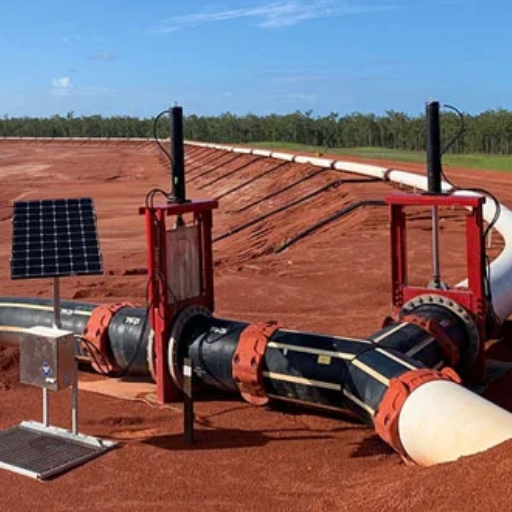
HDPE pipes are helpful for harsh mining conditions as they have high strength and toughness. Mining industries can use them in various temperature, pressure, and abrasive environments. This makes them more durable because they can resist the effects of chemical corrosion from aggressive substances usually found during mining. Additionally, HDPE’s flexibility enables it to withstand ground movements and settlements, reducing the chances of failures and leakages. Further, this long life, combined with its lightweight, also permits easy transportation and installation even in remote areas where mining operations may occur under challenging conditions.
Resistance to Abrasion and Corrosion
When used in mines, HDPE pipes become highly resistant to erosion, making them ideal for such applications where there is a possibility of coming across gritty and corrosive materials. Their polymeric nature has made them immune to particulate and chemical attrition compared to other materials commonly employed in the mine sites. Reports indicate that apart from resistance to general corrosion caused by unfavorable environmental factors, HDPE pipes maintain their shapes when they come into contact with chemicals possessing diverse levels of aggression. This particular characteristic explains why these tubes can last longer, thereby reducing costs associated with their frequent replacement and highly undesirable downtime, especially for any busy mining company aiming to maximize output from its activities. In addition, smooth inner surfaces on HDPE tubes decrease frictional forces against solid objects, making them even more resistant to harsh actions typically experienced within these environments due to the abrading effect on the walls of these pipes.
Durability and Flexibility in Mining Operations
In the mining sector, HDPE pipes’ most crucial properties are their durability and flexibility. These tubes are engineered to tolerate harsh conditions such as temperature changes and ground shifts that are always found in mines. This feature enables them to bend without breaking, reducing the chances of damage since they absorb vibrations and shocks. It is worth noting that HDPEs are lightweight, making handling during installation less complicated and increasing efficiency under challenging situations. Moreover, these materials can withstand some common hazards associated with mining, like crushing forces and impact, thus ensuring continuous productive activity by being reliable all through. Therefore, HDPE pipes have been proven more efficient for contemporary mining because they possess three main features: simplicity of fixing them, strength, and flexibility.
Longevity of HDPE Pipelines in Mining Industries
HDPE pipelines are noted for longevity in the mining industry due to their excellent resistance to environmental stressors and mechanical wearing-off. For example, properly installed and maintained HDPE pipes can last over 50 years, much longer than traditional materials like metal or concrete used before. Besides this, their ability to endure complex chemicals, UV rays, or sudden rises or falls in temperature prevents them from wearing out rapidly in challenging situations during mining activities. Additionally, seamless construction of these HDPE pipelines means fewer leak points while still allowing for shifting ground without compromising structural integrity. Generally speaking, all these attributes combined reduce cases calling for regular repairs or replacements, leading to significant savings on a long-term basis for miners.
What are the typical mining applications for HDPE pipes?
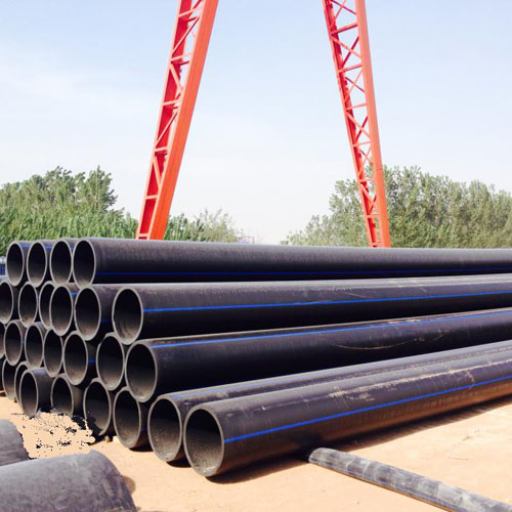
HDPE pipes are used in many mining applications due to their toughness and versatility. They are commonly used to transport slurry, water, and other fluids for mineral processing and dust suppression. Another area where HDPE pipes are applied is in the leachate collection systems, tailings management, and waste disposal operations. Their resistant nature against corrosion makes them suitable for handling highly aggressive chemicals often found during mining activities. Furthermore, this quality allows HDPE to traverse rugged terrains, making them easy to install even in remote areas. As a result, HDPE pipes become dependable among different types of mining processes.
Use of HDPE Pipe in Tailing Systems
HDPE pipes are essential components within tailings management systems due to their exceptional chemical resistance and durability more than anything else; these factors alone set them apart from all other piping materials available today. These pipelines facilitate the safe transportation of tailings slurry from processing plants to storage facilities, preventing leaks and contamination rates. They can also withstand severe mining conditions, such as high temperatures and pressures, that ensure long-term operational reliability. Also, the smooth interior lining reduces frictional losses during tailings flow, thus reducing energy usage when transporting them through HDPE pipeline networks. This aspect simplifies the installation process even at remote locations, which may not have adequate access or resources required for moving heavy objects around quickly since HDPE is relatively light in weight. Ultimately, including HDPE pipes in a system design contributes to safer and more efficient means of managing waste produced by mining activities compared to traditional practices and arrangements for eliminating effluents generated during this process, such as ponds or tanks full of water treatment chemicals.
HDPE Pipe for Drainage and Dewatering
HDPE pipes’ excellent corrosive and chemical resistance make them widely used in drainage and dewatering applications. Excessive water is effectively drained out of construction sites, agricultural fields, or mining operations towards various environments by these pipes. The smooth inside of HDPE pipes helps to maximize the water flow and minimize any blockages or maintenance problems. Again, they are light, which makes it easy for one to carry or even transport them easily; hence, they are preferred when compared to traditional materials, mostly when sourcing for remote areas. HDPE pipes have a long life and are strong, making them an ideal long-term solution for drainage and dewatering purposes, thus ensuring the stability and efficiency of projects across several industries.
PE Pipe Use in Process Water Transport
Polyethylene (PE) mechanisms for conveying process water increasingly attract attention due to their robustness, adaptability, corrosion resistance, and anti-scaling properties. This feature has made PE pipes popularly known as water conveyers within industrial processes where different pressure levels and temperatures could be experienced under variable conditions. Moreover, seamless manufacturing helps prevent leaks, enhancing the efficiency of the systems involved in pipe transportation. These tubes are also lightweight and, therefore, can easily be relocated from one place to another without using so much money on transportation plus installation time, especially during complex situations or remote areas where these factors may pose challenges. In this context, PE pipelines offer a viable alternative that meets both business requirements and environmental concerns since companies want efficient means of transporting water that will lead to sustainable use of the same resources.
How Are HDPE Pipes Installed in Mining Operations?
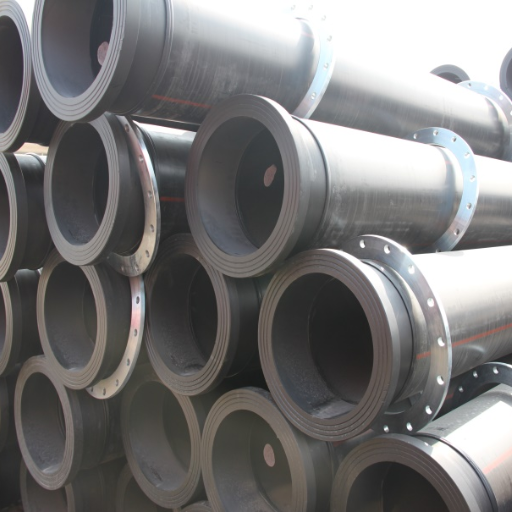
In mining activities, installing HDPE pipes involves specific necessary processes to ensure their long service life. Initially, the land is prepared to evaluate its condition and plan for the pipe system layout. Following this, trenching is done where pipes are placed at appropriate depths to avoid damage and facilitate efficient drainage. Hot fusion or mechanical joint fittings are then used to connect HDPE pipes after trenching is completed. They are then placed in trenches, covered by backfill material, and compacted for stability. Lastly, there is an inspection of leaks plus a functionality test before reinstating the site into its original state. Through this intensive process, HDPEs have good drainage qualities for miners.
Techniques for Joining HDPE Pipe and Fittings
There are various ways of joining PE pipes and fittings together, which offer different benefits depending on what they are used for or the operating conditions involved. Three primary ways include;
- Heat Fusion: The most commonly employed method of connecting PE pipes involves heating both pipe ends and fitting them until they melt. Upon cooling down, they merge, forming a perfect bond without any seams that can lead to leakages.This technique is most suitable for large pipes due to its leak-proof joints.
- Electrofusion: For electrofusion techniques, the fitting must contain built-in electric coils, which come into play when an electric current passes across them. This causes the outer black layer of a pipe to melt, fusing it with a fitting while it cools down. Electrofusion offers regularized and dependable joins, especially in cases where accessibility is limited.
- Mechanical Fittings: This includes using clamps, couplings, or flanges instead of heat fusion to join PE pipes. Mechanically joined systems may be more advantageous where there is no existing piping system, but one needs repair, thus saving time. They take less time during installation and can easily be dismantled during temporary setups.
Choosing the best joining method depends on several factors, including the size of the pipes, working conditions, and the project’s specific requirements. This ensures that a fluid-carrying system is both efficient and durable.
Advantages of Butt Fusion and Leak-Free Joints
However, it has several advantages that make butt fusion a popular choice for a range of applications. Firstly, this creates an uninterrupted joint that does not allow leakage and is essential to fluid transportation systems. Such joints are designed to minimize the risk of leaks, reducing chances of environmental pollution and expensive remediation. Secondly, butt fusion joints are solid and durable and hence can provide the same strength as well as higher than the pipe itself, enhancing the overall quality of pipelines. Moreover, this method allows installation flexibility, enabling the creation of complex designs without impacting the soundness of the fused joints. Finally, butt fusion is highly productive for large-scale schemes due to its fast implementation and reduced downtime meaning financial benefits for the entire project.
Installation of Submerged or Floating Polyethylene Pipe
When installing submerged or floating polyethylene (PE) pipes, specific instructions should be followed to guarantee success and longevity. First, proper evaluation and planning must be done, including water depth assessment, among other aspects, such as prevailing flow conditions or barriers to free movement within water bodies. Secondly, sections made from prefabricated PE pipes ought to be connected before being dropped underwater, thus reducing installation time underneath.
Also important is anchoring PE pipes securely onto the seabed or riverbed to prevent displacement by fluid movements or changing environmental conditions around them. Furthermore, the alignment must be ensured that it is correct and support is adequate to avoid excessive pressure on areas where the joining has been performed. Observing these principles will result in successful installations of immersed/floating PE piping systems while maintaining efficient flows with guaranteed reliability for liquid transportation purposes.
What are the performance metrics of HDPE pipes in mining industries?
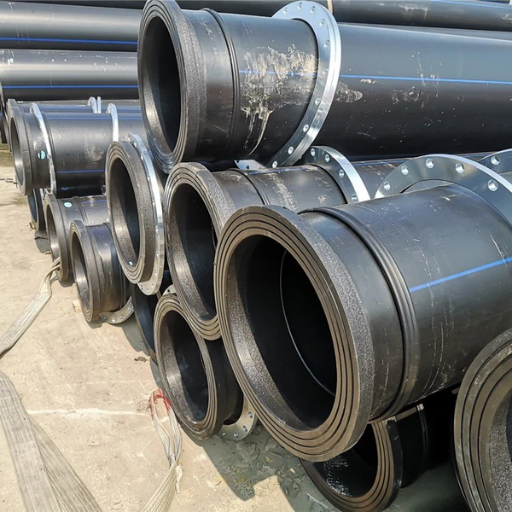
Due to their robust performance, high-density polyethylene (HDPE) pipes are widely used in the mining industry. It is corrosion-resistant, a plus when moving different chemicals and waste products, as it does not degrade. HDPE pipe has a high tensile strength, enabling it to handle massive amounts of pressure and impact needed in difficult mining conditions. Finally, its flexibility reduces the likelihood of cracking under stress during installation or after completion due to variations in terrain. In addition, HDPE boasts a low friction coefficient, which improves flow efficiency, minimizing energy costs. Lastly, being lightweight reduces transportation and installation time, thus positively impacting project timelines and cost-effectiveness.
Withstanding High Internal Pressure Surges
High-density polyethylene (HDPE) pipes are engineered to withstand high internal pressure surges frequently occurring during mining operations. The resilience of HDPE against pressure fluctuation could be attributed to intrinsic properties such as high-tensile-strength materials and flexibility. Similarly, manufacturers recommend specific pressure ratings for HDPE pipes following intensive testing, confirming their ability to sustain instant pressure surges without buckling or collapsing. Moreover, the durability of these conduits can be improved through proper fitting methods employed alongside joints specifically designed for applications involving elevated pressures. Additionally, regular checks and compliance with maintenance instructions are vital in ensuring that systems remain intact as they adapt to varying pressures so as not to interfere with fluid transporting reliability and efficiency in mines.
Handling High pH Caustic Solutions
High-density polyethylene (HDPE) is a suitable material for mining and other industrial fields that can handle high pH caustic solutions. HDPE has excellent resistance against chemicals, which ensures durability and performance in corrosive environments. Research findings reveal that it remains structurally rigid despite highly alkaline pH levels. In this case, the user should consider appropriate grades and wall thickness to cater to the concentration of specific caustic solutions used with HDPE. In addition, effective sealing and jointing technologies are required to prevent leaks and improve the system’s overall reliability. It is also essential that these systems are inspected regularly to identify potential degradation caused by prolonged exposure to high pH conditions to maintain their effectiveness.
Performance in High Density and High Flow Situations
Materials such as HDPE significantly influence the performance of fluid transport systems in high-density and large-flow situations. When handling fluids with high flow rates, smooth internal surfaces allow for reduced frictional losses, thus enhancing the flow rate. HDPE pipes are built in such a way that they can withstand substantial internal pressures without yielding, hence ensuring consistent flows under demanding circumstances. The correct sizing of pipe systems and the strategic positioning of pumps are essential in attaining optimal flow rates while minimizing turbulence. Design validation through testing and simulations helps guarantee that a system can meet expected operational requirements while still conforming to performance and safety standards.
What Role Does HDPE Pipe Play in Sustainable Mining Practices?
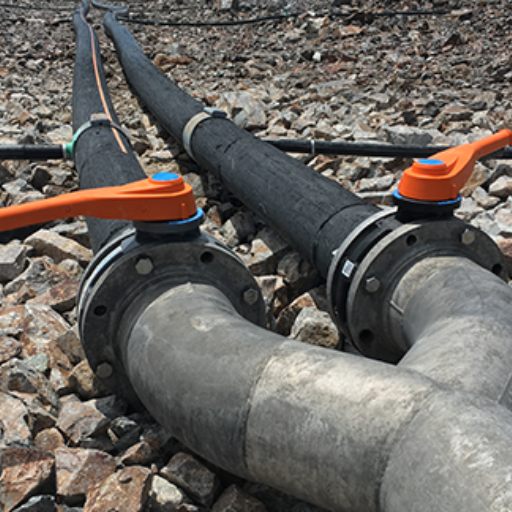
Sustainable mining can be achieved using HDPE pipes in fluid transportation as they are long lasting and eco-friendly. Its resistance to corrosion & chemical attack results in a longer service life, thus reducing the need for frequent replacement that may result in environmental degradation. It is also lightweight and contributes to reduced energy consumption during mining activities, making it easy to transport or install. Additionally, HDPE is versatile enough for applications such as water management and tailings disposal, enhancing resource efficiency while reducing ecological footprint. HDPE piping ensures compliance with regulations and shows commitment toward sustainable practices in the mining industry.
Reducing Environmental Impact with HDPE Pipe
HDPE pipes help to reduce environmental impact in several ways. First, their durability reduces waste since replacements are done less frequently. Additionally, the material can be recycled, allowing responsible disposal practices and minimization of reliance on virgin materials. Besides this, HDPE has lower greenhouse gas emissions than conventional materials due to its energy-efficient production and installation processes. On top of that, using HDPE within mining operations protects against risks of chemical seepage into adjacent environments, thus promoting safer environmental conditions. By incorporating these systems into their processes, miners get compliant and show their efforts towards sustainability.
Lifecycle and Recycling of Polyethylene Pipe
Polyethylene pipes (PE) life starts with gathering raw materials, particularly natural gas, which is transformed into ethylene here. This is then polymerized to produce polyethylene resin, which is turned into pipes through extrusion processes. Because of their resistance to corrosion and durability, PE pipes have a long lifespan when laid in place that can extend up to several decades. Disposal options for end-of-life PE pipes include recycling so that they may be reprocessed into new tubes or other products, thereby supporting circular economy principles. Roughly 30% of PE pipes can be recycled, as reported by reputable sources, pointing out the significance of proper disposal and recycling programs. By doing so, effective recycling programs reduce environmental impact while also reducing the need for new raw materials, promoting sustainability within the piping industry.
Innovations in HDPE Pipeline Systems
Recent advancements in HDPE pipeline systems have focused on enhancing performance, safety, and sustainability. One important innovation was the creation of multi-layered HDPE pipes that offer better protection against external impacts and environmental stresses, thus prolonging pipeline life. Additionally, intelligent HDPE pipes fitted with sensors allow flow rates and pressure to be monitored in real time, which helps detect leakage early, reducing water loss. Moreover, incorporating recycled HDPE materials into new pipe production supports sustainability objectives by minimizing waste generation and energy consumption. These are not only reliable but also improve efficiency in terms of HDPE systems as well as environmentally friendly operations for pipelines.
Reference sources
-
Polyethylene Piping Systems in the Mining Sector
This is a case study that explores the use of polyethylene piping systems in mines worldwide, emphasizing their role in efficient and safe mining operations.
Read more -
HDPE Pipe for Tailings Management in Mining Operations
This source details the critical role of HDPE tailings pipes in mining operations, focusing on environmental compliance and efficient tailings disposal.
Read more -
Performance of HDPE Pipes Under High Loads
This detailed document examines the performance of HDPE pipes under high loads, particularly in tailings dams and heap leaching in mining facilities.
Read more
Related Articles:Exploration of High-Density Polyethylene (HDPE) Mining Pipes





